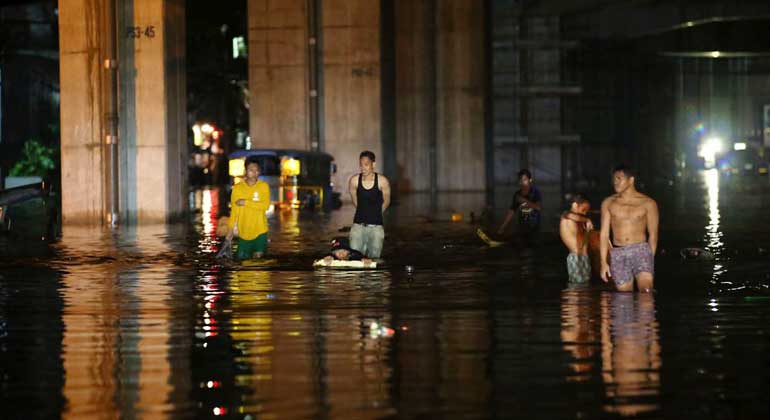Disaster risk reduction programs are being updated, taking account of COVID-19

By Mariel Alison L. Aguinaldo
Disaster risk reduction policies and measures are being updated to befit the COVID-19 situation, according to the Office of Civil Defense (OCD).
Two memorandum circulars are being drafted by the members of the National Disaster Risk Reduction and Management Council (NDRRMC), which is administered by OCD.
Other government agencies involved in the process are the Department of Public Works and Highways; the Department of Social Welfare and Development; the Department of Health; the Philippine Institute of Volcanology and Seismology; and the Philippine Atmospheric, Geophysical and Astronomical Services Administration.
The first memorandum circular discusses the establishment and management of COVID-19-sensitive evacuation centers for typhoons, earthquakes, and other natural disasters. This includes the center’s design, the best locations for setup, and how to follow health and safety standards set by the Department of Health (DOH) and other involved government agencies.
The second memorandum circular sets interim guidelines on conducting a nationwide simultaneous earthquake drill during the pandemic, which the government plans to implement in the third quarter of the year. “Here, we’ll see how you should evacuate considering that people around you could have COVID-19,” said Susana G. Juangco, director for capacity building and training service at the OCD, during a session on disaster preparedness organized by the Department of Trade and Industry on August 18.
Once the NDRRMC is finished drafting the documents, a higher body will review them and give their final comments. These will then be passed back to the NDRRMC for final approval before public release, which they are aiming to do by the third quarter of the year as well.
The Philippines recently faced a string of disasters during the pandemic. In May, Typhoon Ambo forced 140,000 citizens to flee into evacuation centers. An earthquake with 6.6 magnitude also hit Masbate province on the morning of August 18, causing damage to houses made of light materials.
Aside from the memorandum circulars, the NDRRMC has been conducting webinars on relevant topics such as funding disaster preparedness amidst COVID-19. Resources on disaster risk management can be accessed online through the DRRM Knowledge Center.
The council is also conducting online courses for disaster risk management practitioners, which they are planning to shift into a blended learning style once the pandemic has become more manageable.
“There are some training which are skill-oriented… It’s hard to teach skills just by watching videos. You won’t be able to practice,” said Ms. Juangco.



